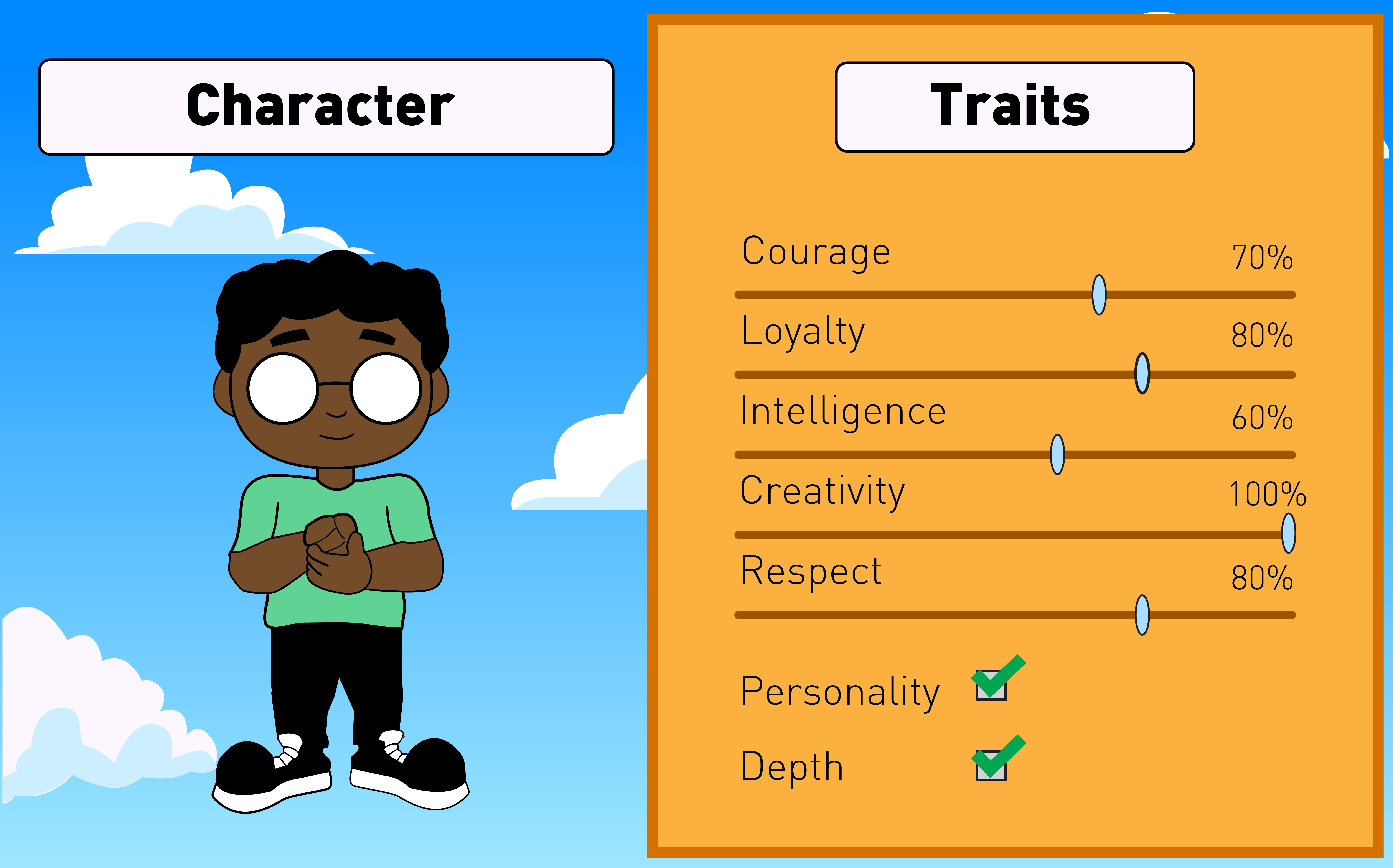Character Creation 101: Tips for Believable and Surprising Characters
Whether it’s a fast-paced mystery or a fantastical novel involving wizards, how do authors make their stories believable and relatable? Other than having a strong and attention-grasping plot, there’s another core element of stories that make them so easy to delve into and enjoy: the characters! You’ve probably heard the drill before about multi-dimensional characters, how they have to be fleshed out and realistic. But when you’re first planning them out, it’s easy to get lost amidst all the different character-designing recommendations and advice. So, for making characters that hit the balance between believable and engaging, here are three essential tips.
1. Don’t feel limited by common archetypes or assumptions.
Often, the most interesting characters are ones that defy your expectations. There are always common roles that you find recurring across different genres and eras, but you don’t have to fill them the same way everyone else does. If you do, cool. Sure, your characters can still be deep and unique. But you might just be starting, trying to scope out the characters. If so, you don’t have to include all the classic traits. Not every hero has to be stubborn or kind. Not every mentor is grey and wise. Let your imagination run free — and there’s no obligation to even use the same roles. Be creative!
Following the same train of thought, you don’t have to use common character trait pairings, either. Even without the thoughts of roles and the like, I can name a few dozen charming heartbreakers with a secretly soft heart and traumatic backstory. Same with feisty and businesslike girls who thinks the main character’s jokes suck. No offense, I like charming heartbreakers. I like soft hearts and traumatic backstories. I like feisty girls, businesslike ones, and people who keep the main character’s ego in check. But you don’t always have to use the same groupings of character traits. It is great to have a character with a personality type you recognise and like, but at the same time — what if you’d had a businesslike heartbreaker who thinks the main character’s soft heart sucks? Now that, I haven’t seen before.
2. Show more than one dimension with different relationships and situations.
One of the reasons it’s so difficult to write characters with a lot of depth is because it often happens that characters come off as one-dimensional. If your character acts the same no matter what situation they’re in or who they’re with, there’s not much to them. Yes, it’s important to keep consistent with a character’s personality, but no one is always the exact same, particularly when we bring character development arcs for important characters into the scene.
I think this is an essential part of making a character. You want the main characters you’re putting time into developing to change and grow with the readers.
So that’s why we have dynamic characters, why we have character development. The different obstacles and events of the story make your character learn more, and that makes their personality or views or disposition change. You also want your character to surprise people. Every character has their low points. When your character is at their worst, when their flaws really shine through, you can surprise people by showing how they can still be relatable and redeemable. When a character is at a bouncy, cheery status quo, letting the cracks show or giving them a moment of uncharacteristic imperfection makes them more interesting.
My favourite way to show the contrasting sides of a character is showing how they act with different people. All sorts of varied, diverse characters with whom they have all sorts of relationships. I’ve often seen, for example, characters who appear standoffish and unkind, or chill and careless, but display opposing traits with specific people they care about.
One note, though. This may sound contradictory, but even with different dimensions, you can still see hints of the basic personality of your character! Even traits that seem straightforward can manifest in different ways. That’s what makes characters consistent, but still so complex.
3. Don’t let your own planning limit your characters!
This is a problem I often have. I’ve written a 300-word paragraph just talking about how my character acts when they’re uncomfortable. Then I put my pen to paper (or fingers to keyboard, I guess) and when my character’s uncomfortable, I somehow naturally type out a completely different reaction! Two days later I reread it, and I can’t believe what I’ve written. I spent so long writing that description, but when I actually write about the character, they act nothing like I planned. On one hand, that’s what came naturally to me. That’s what I felt like writing, what felt right for the scene. On the other hand, that’s not how the character was “supposed” to react. What do I do now?
There isn’t a hard fast rule. Honestly, it depends on the author’s choices for what they would do in a situation like this. I can guarantee that most writers have found themselves in similar situations.
My personal philosophy is to keep my planning pretty loose, especially for dynamic aspects of a character like personality.
Most of my documents add a lot of details, but I’ve long forgone those bulky paragraphs. Usually, I write in dot-jots and casual slang — one of my main characters’ personality traits includes “little brother material” and “increasingly creative plans on murder.”
Then, when I’m writing about my characters, I do try to keep in mind these “personality traits” or whatever vibe I’m going for. However, if I find my character on the page is turning out a little different, I’ll see how I feel about it first. If I’m frustrated and think that they’re turning out too plain and janky, I’ll rewrite the section. If I like it, if it feels like them, then I’ll go edit my planning document. It depends!
I would, however, usually recommend that you stick pretty close to more fixed parts of your character, like their backstory and appearance (unless, say, they get a cool scar as a plot point). If your character’s hair colour is changing without the aid of hair dye, that’s going to raise a few eyebrows. And if you decide to spontaneously change a vital event in their past, that could change a lot about them as a person. If you do decide to edit something like this, make sure to record it somewhere so you don’t get mixed up.
In short, creating good characters may take a bit of hard work, but it’s not as daunting as it seems. But most importantly, too, make sure you’re enjoying yourself as you’re making your characters! For me, I love designing characters, maybe even more than writing the story itself. This should be an enjoyable and chill process, so if you ever find yourself losing motivation, you don’t always have to follow these tips to a T. Take a break. Try a different perspective. Attempt a different character, or even just start writing.
Have fun!




